Milling Your Own Wheat
My Milling Journey
I began milling my own wheat in 2020. I was on a health journey, discovering ways to eat clean and get more nutrients into my daily diet. I already made most of my food from scratch, including most of the bread we ate.
A friend of mine offered her Nutrimill Classic so I could get some hands on before investing in my own. There is a learning curve with milling, but you’ll catch on quickly. I have tips and tricks to home milling below.
What struck me was having an immediate flavor difference in my baked goods. The hard red wheat gave all my bread a nutty, rich flavor that we fell in love with. My body loves having all the fiber and nutrients in my baked goods. I can’t recommend this enough!
What I grind with my wheat mill:
- Hard red wheat berries
- Hard white wheat berries
- Soft white wheat berries
- Rye wheat berries
- Oat flour
- Rice flour
- Corn meal
Nutrients in 100g (3.5oz) of hard red wheat berries:
My recommendation
Which grains do you use?
I always have the following grains on hand and use them all, but my go-to grain is hard red wheat. I use a percentage of them in nearly all my baking because I love the flavor it gives.






Tips & Tricks with Home Milling
If you can find a friend to either borrow it or go get ‘hands on’ their grain mill, that’s the best option for just starting out. If you have a stand mixer, grab a grain mill attachment or search for a small, hand crank grain mill. You don’t want to have a lot of money invested if you realize this is just way more work than it’s worth to you.
Start small. If you’ve never done this before, don’t go buy the most expensive grain mill and a hundred pounds of grain! Find the cheapest grain mill that will work for you and purchase 5-10 pounds of grain.
I would start with either hard white wheat berries or soft white wheat berries. They are the most neutral and versatile of the grains. If you have Amazon Prime, it’s cheapest to grab a small bag of grain there to begin milling. You will find that shipping heavy grain is a challenge. Once you dive in and know home milling is worth the effort, buy your grains from Azure Standard and use the drop locations option. This saves so much money in the long run.
Whole grains definitely soak up more moisture than store bought bread! You will notice right away that the bread recipes you’ve been using for a while are suddenly very dried out once you switch over to home milled flour. You will need to balance this fact out, whether you pull back a little on the amount of flour you use or splash a little more liquid into your recipe.
I will often use less flour and allow my initial knead to stay tacky to the touch. Another way to combat this is letting your water and home-milled flour to sit for 45m to let them come together (this is called autolyse). After the resting period, you can see whether you need to add more moisture or not.
If you aren’t familiar with making your own bread at home, you need to be aware of the short shelf life of fresh bread. Home milled fresh bread is no exception. Because we are cutting out all the preservative junk from our baked goods, we don’t have the shelf life of a store bought loaf.
My trick to adding a few extra days to my homemade bread is raw apple cider vinegar. This also helps with the above mentioned need for a little extra liquid in recipes. I will splash a little raw apple cider vinegar into my dough to give myself a couple extra days to enjoy my bread. You don’t need much, or you will be tasting that in your loaf!
If you just don’t eat that much bread, cut your fresh loaf in half and place in a ziplock freezer bag (after they are fully cooled) to enjoy later.
If you make a loaf of home milled bread and it’s just too dense and dry for you, go with a 50/50 flour mixture. There are several breads that I make using 50% home milled, whole grain flour, and 50% AP flour. Most of my breads and pastries are 50/50 flour mixes. My sourdough sandwich loaf is only 30% whole grain flour.
This totally depends on your own tastes and desires. Half whole grains is still way more than you’ve been getting.


